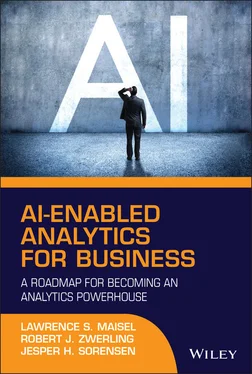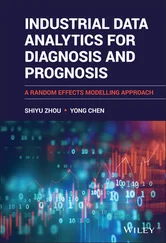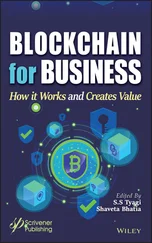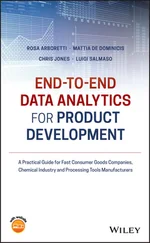1 1.BrainyQuote. (n.d.). James Madison quotes. https://www.brainyquote.com/quotes/james_madison_135446.
2 2.Turin, A.M. (1950). Computing machinery and intelligence. Mind 49: 433–460. https://www.csee.umbc.edu/courses/471/papers/turing.pdf.
3 3.Zwerling, R.J. and Sorensen, J.H. (2019). AI & ML basics in business. Finance Analytics Institute, Analytics Academy.
4 4.Zwerling, R.J. and Sorensen, J.H. (2019). Visualization vs. analytics, what each tool is, how they are different & where they apply. Finance Analytics Institute, Analytics Academy.
5 5.McDonald, A. (2015). Analytics ROI—how to measure and maximize the value of analytics? Eckerson Group. https://www.eckerson.com/articles/analytics-roi-how-to-measure-and-maximize-the-value-of-analytics.
6 6.Nucleus Research. (2011). Analytics pays back $10.66 for every dollar spent. Research Note. https://www.ironsidegroup.com/wp-content/uploads/2012/06/l122-Analytics-pays-back-10.66-for-every-dollar-spent.pdf.
7 7.Deloitte. (2013). The analytics advantage: we're just getting started. dttl-analytics-analytics-advantage-report-061913.pdf( deloitte.com).
CHAPTER 2 Why AI-Enabled Analytics Is Essential for Business
All models are wrong; some are useful .
—George Box 1
We are at the dawn of an era of digitization for business that requires on-demand continuous planning where human and artificial intelligence (AI) work hand in hand to achieve insights for better results from data-driven decisions. New software and cloud computing are making analytics more available, but is business adopting these new tools at a break-neck pace? Well, no! The adage “You can lead a horse to water, but can’t make him drink” is sadly applicable to many business experiments in analytics that have proven successful—but all too often are not sustained.
We will explore in subsequent chapters the impediments to analytics, but here our attention turns to why analytics is essential for business and why the executive must embrace the implementation of AI and analytics.
First, without analytics, the business cannot remain competitive and will be at risk of making decisions that fail to recognize market opportunities, ineffectively deploy capital, and misallocate staff resources to low-value efforts. Second, without analytics-based decisions, we as humans will continue to be inherently biased, which leads to under-optimized performance. Third, executives pursuing analytics have a better chance of being rewarded from improved business performance; those who do not risk being passed over. Accordingly, we will dive into the competitiveness, decision processes, and career advancement that analytics supports.
Today’s competitive landscape requires the adoption of analytics for business to remain competitive, growing, and profitable. The business that can plan better, wins! For example, if Company A can more accurately forecast its demand, then it gains efficiency over costs and use of capital to better allocate to grow its markets; whereas Company B, which has failed to better forecast demand, loses market share due to the inability to fulfill demand or inefficiency in its costs that leads to higher prices.
This example seems obvious, yet the stampede to incorporate AI-enabled analytics in business is slow to develop, often from the lack of people skills and analytics tools, but primarily from an executive’s perspective to under-value the benefits from AI. Until executives understand and believe in the value from AI, business will confront massive amounts of data with spreadsheets, which is akin to taking a cross-country trip on a tricycle. Fine if you have the time—but you don’t.
Unfortunately, too many executives do not appreciate or understand the value of AI and analytics to solve business problems, such as optimizing areas of the business and actions that can be derived from insights to improve the business. This is due to several factors, including lack of executive training on analytics, no advocate emerging to make a compelling case for analytics, and, as is often true with other innovations, executives who are risk-averse about investing in what they do not understand or accepting a risk of failure.
The lessons learned from prior business technology revolutions have taught that the need to enter the modern digital transformation era is a requirement and not an option. In times past, businesses that have not evolved with the changes have perished or, worse, become insignificant players in their industry segment.
Think IBM, once the preeminent and dominant name in computers in the twentieth century, is little spoken of in the 2020s. Still a $70 billion company, IBM is not a point of presence in Silicon Valley, which has bred competitors to take mindshare when it comes to computer innovation and relevance. Think too of Kodak, born in the 1880s, a onetime “blue-chip” company that held 90% of the film and 85% of the camera market in the United States. As late as 1996, it was a $16 billion company with 145,000 employees. But the switch to digital cameras and smartphones decimated Kodak, and by 2012, Kodak filed for bankruptcy protection. 2
In comparing the 1955 Fortune 500 list of companies to the 2019 list, there remain only 52 companies. The penalty for not recognizing the emerging digital transformation era will be just as severe. Companies like Blackberry, Nokia, and Motorola are shadows of the prevailing players they once were in the market they shaped. Conversely, companies like Amazon and Netflix have led the way and dominated with AI and analytics. Note, though, that adverse consequences are not limited to large companies and are equally applicable to companies of any size or industry, and public, private, profit, or non-profit.
The executive who does not realize the value from analytics or fails to adopt will be replaced by an executive who can deliver insights for data-driven decisions. This is inevitable because executives who fail to do so will endanger their company’s performance and competitive position.
HUMAN JUDGMENT AND DECISION-MAKING
In business, human decision-making does not always optimize performance because it is vulnerable to bias and intuition: that is, gut feel. We are naturally intuitive about the future but quantitatively limited to calculate what the future probably can be. We react to events and rely on experience to “guide” us to a decision. We also may have a personal want or need that influences and impacts our decisions.
As such, we must first understand how nature has wired us to make decisions before we can appreciate and accept how analytics can contribute to enhancing decision-making that can lead to improved business performance. The need to balance our instinctive judgment with AI for decisions is necessary to fulfill the potential value of analytics in business and avoid the shortcomings associated with traditional decision-making.
The research of Kahneman and Tversky, who received the Nobel Prize for Economics in 2002, produced a ground-breaking understanding of human judgment and decision-making under uncertainty. Their research is viewed as one of the most influential social science behavioral insights of the past century. It challenged the notion held by many economists that the human mind is unconsciously rational.
Kahneman authored a book, Thinking, Fast and Slow ; the central thesis is the interplay between what he terms System 1 and System 2 thinking. 3 In System 1, a person has an instinctual response that is automatic and rapid and has been shaped by experience and expertise. For example, how much is 2 plus 2? Hopefully, you said 4. Your response was immediate and almost instinctive because, over many years, this simple answer has always been the same. In effect, System 1 seeks coherence and applies relevant memories to explain events or make decisions.
Читать дальше












